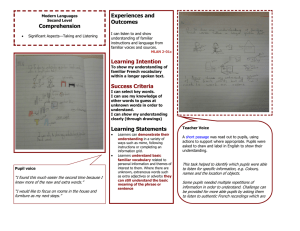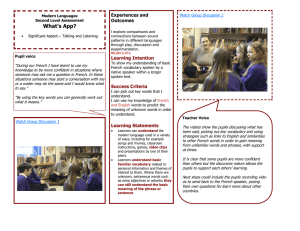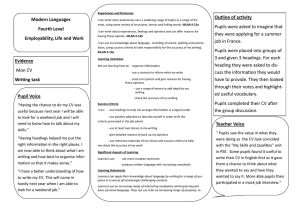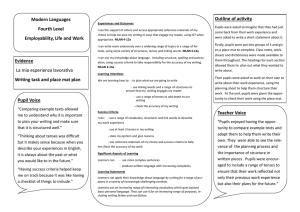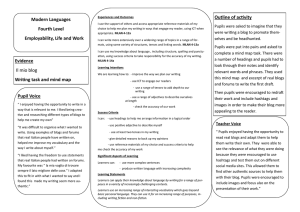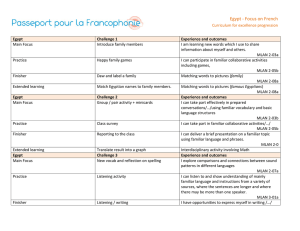‘Qui est-ce?’ game (Guess Who) Experiences and Outcomes
advertisement
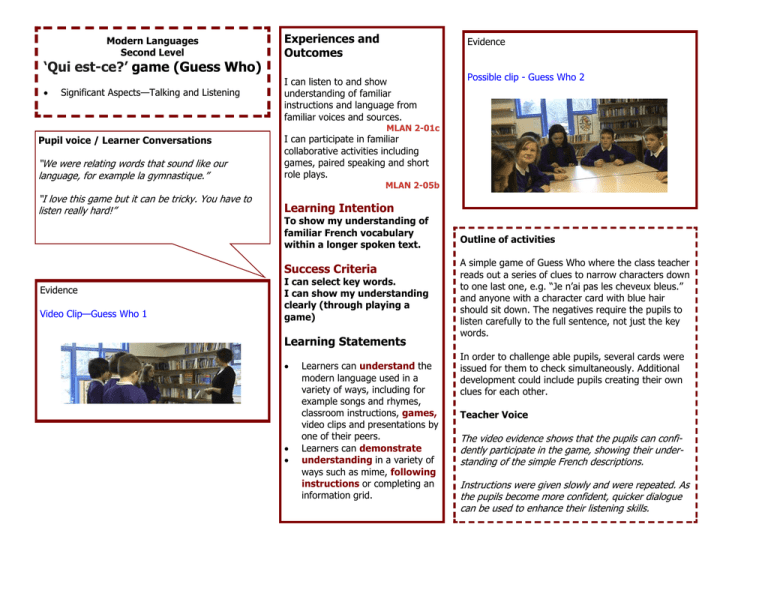
Modern Languages Second Level ‘Qui est-ce?’ game (Guess Who) Significant Aspects—Talking and Listening Experiences and Outcomes Evidence I can listen to and show understanding of familiar instructions and language from familiar voices and sources. Possible clip - Guess Who 2 MLAN 2-01c “We were relating words that sound like our language, for example la gymnastique.” I can participate in familiar collaborative activities including games, paired speaking and short role plays. “I love this game but it can be tricky. You have to listen really hard!” Learning Intention Pupil voice / Learner Conversations MLAN 2-05b To show my understanding of familiar French vocabulary within a longer spoken text. Success Criteria Evidence Video Clip—Guess Who 1 I can select key words. I can show my understanding clearly (through playing a game) Learning Statements Learners can understand the modern language used in a variety of ways, including for example songs and rhymes, classroom instructions, games, video clips and presentations by one of their peers. Learners can demonstrate understanding in a variety of ways such as mime, following instructions or completing an information grid. Outline of activities A simple game of Guess Who where the class teacher reads out a series of clues to narrow characters down to one last one, e.g. “Je n’ai pas les cheveux bleus.” and anyone with a character card with blue hair should sit down. The negatives require the pupils to listen carefully to the full sentence, not just the key words. In order to challenge able pupils, several cards were issued for them to check simultaneously. Additional development could include pupils creating their own clues for each other. Teacher Voice The video evidence shows that the pupils can confidently participate in the game, showing their understanding of the simple French descriptions. Instructions were given slowly and were repeated. As the pupils become more confident, quicker dialogue can be used to enhance their listening skills.
